| Component | Description | Specifications | Manufacturing Steps |
|---|---|---|---|
| Touchscreen Display | Interactive screen for customer input and menu display | 15"-32" Full HD, capacitive touch | 1. Select appropriate screen size and technology. |
| Processor | Central processing unit to run software and handle transactions | Intel i5/i7 or ARM-based processor | 2. Source high-performance processors. |
| Software | Operating system and application for menu navigation and payment | Custom software with user-friendly UI | 3. Develop and install the software. |
| Payment Terminal | Device for processing credit/debit card payments | EMV compliant, NFC-enabled, PCI DSS certified | 4. Integrate payment terminal with the system. |
| Printer | For printing receipts or order confirmations | Thermal printer, 80mm paper width | 5. Install printer and connect to software. |
| Network Interface | Connects the kiosk to the internet for online ordering and updates | Wi-Fi and Ethernet capability | 6. Ensure network interfaces are properly configured. |
| Cabinet/Enclosure | Housing for all components, ensuring durability and security | Stainless steel or high-quality plastic | 7. Design and fabricate the cabinet/enclosure. |
| Cooling System | Maintains optimal operating temperature for internal components | Fans or heat sinks as needed | 8. Install cooling system in the cabinet. |
| Power Supply | Provides stable power to all components | AC to DC converter, UPS backup option | 9. Integrate power supply within the kiosk design. |
| User Interface (UI) | Design elements that guide users through the ordering process | Intuitive layout with visual elements | 10. Finalize UI design and integrate with software. |
| Security Features | Measures to protect data and hardware | Locking mechanisms, tamper-proof design | 11. Implement security features in the manufacturing process. |
| Testing and Quality Control | Ensures all components work together seamlessly | Functional and stress testing | 12. Conduct thorough testing and quality assurance checks. |
A self order kiosk in a restaurant is an interactive touchscreen device that allows customers to place their orders independently without needing assistance from staff. These kiosks typically feature user-friendly interfaces that display the menu, enabling patrons to browse through food and drink options, customize their selections, and complete payments directly at the kiosk. The benefits of self-order kiosks are significant: they streamline the ordering process, reduce wait times, and minimize order errors, enhancing overall customer satisfaction. Additionally, they free up staff to focus on other important tasks, improving operational efficiency. By integrating upselling features, these kiosks can also increase average order values, making them a valuable investment for modern restaurants.
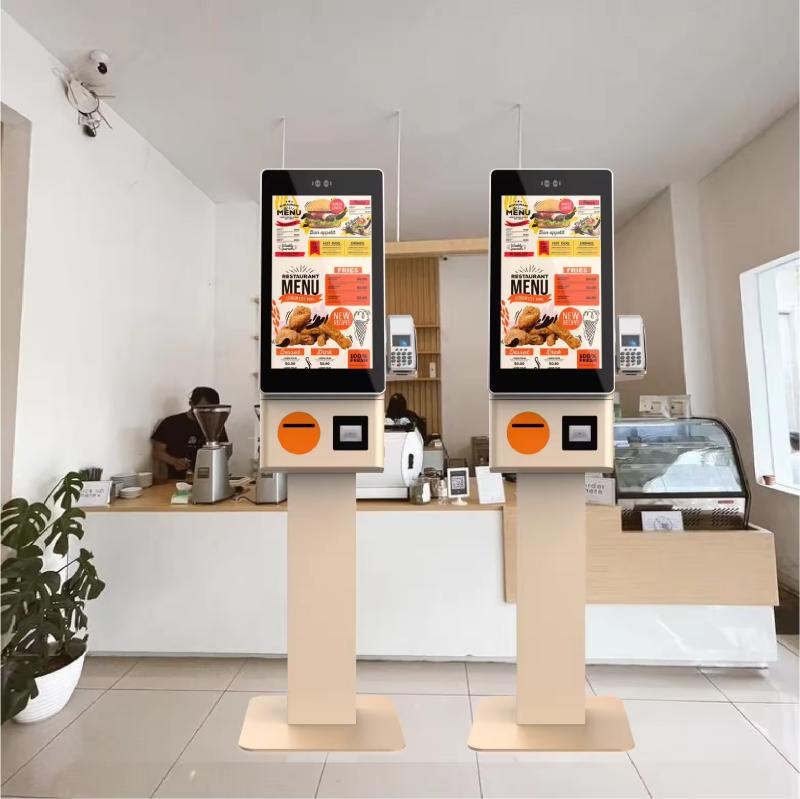
Restaurant self ordering kiosk serves several essential functions that enhance the dining experience for customers. They allow patrons to browse the menu at their own pace, view images and descriptions of dishes, and customize their orders with just a few taps. The kiosk also facilitates quick and secure payment options, including credit cards and mobile payments, making transactions seamless.
The advantages of this kiosk are numerous. Firstly, it significantly reduces wait times, allowing customers to place their orders efficiently without needing to wait for a server. This leads to faster table turnover and increased sales. Secondly, self ordering kiosk minimizes human errors, ensuring that orders are accurately captured and processed. Additionally, it provides restaurants with valuable data on customer preferences and ordering patterns, helping to tailor marketing efforts and menu offerings. Ultimately, this kiosk improves operational efficiency and enhances customer satisfaction, making it an attractive solution for modern dining establishments.
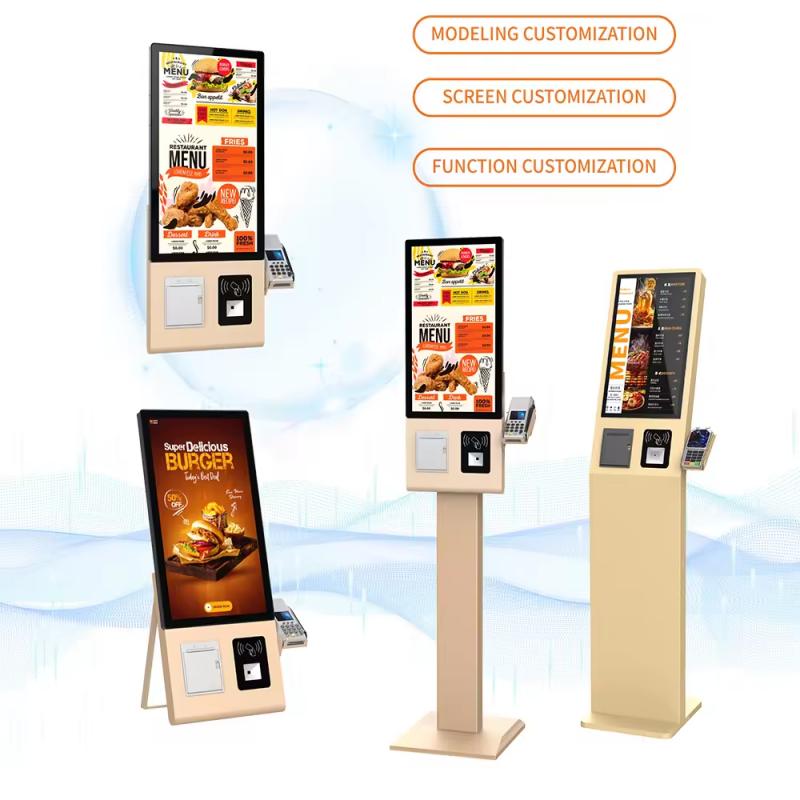
The price range for a restaurant self ordering kiosk can vary significantly based on several factors, including the kiosk's features, design, and the manufacturer's reputation. On average, a basic self ordering kiosk can cost between $3,000 and $7,000. These models typically offer essential functionalities, such as a touchscreen interface, basic payment processing, and standard software. For more advanced kiosks that include features like customized branding, enhanced user interfaces, integration with existing POS systems, and robust data analytics capabilities, the price can range from $7,000 to $15,000 or even higher. Additionally, costs may increase with added features such as dual screens for menu displays, additional software licensing fees, and ongoing maintenance contracts. When considering the investment, restaurants should also evaluate potential ROI through increased efficiency, improved customer satisfaction, and higher sales volumes, making self ordering kiosks a worthwhile investment in the long run.
| Kiosk Type | Price Range | Features |
|---|---|---|
| Basic Self Ordering Kiosk | $3,000 - $7,000 | Touchscreen interface, basic payment processing, standard software |
| Mid-Range Kiosk | $7,000 - $10,000 | Custom branding options, enhanced user interface, basic analytics |
| Advanced Self Ordering Kiosk | $10,000 - $15,000+ | Dual screens, integration with POS systems, advanced analytics, loyalty program integration |
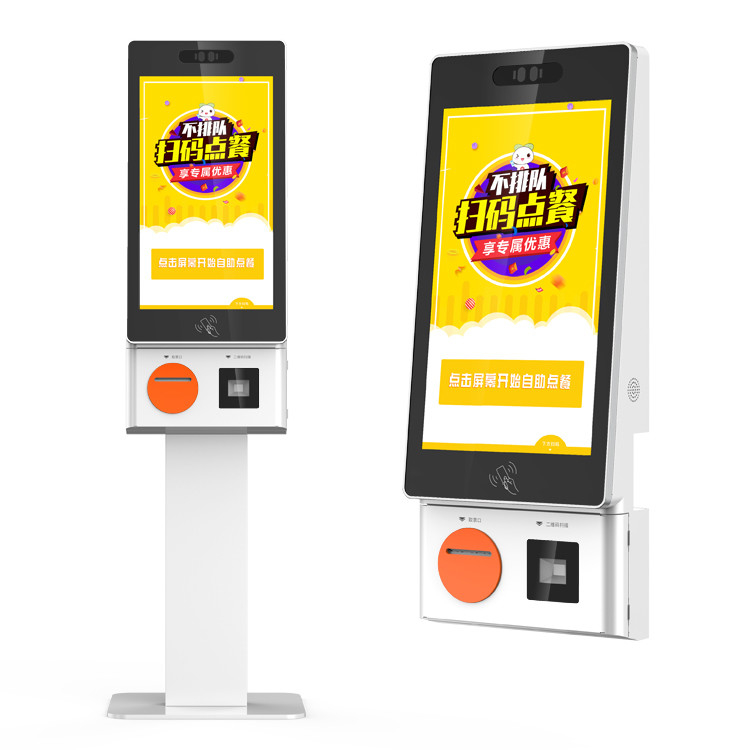
Site Assessment: Conduct a thorough assessment of the restaurant layout to determine optimal kiosk placement for visibility and accessibility.
Electrical and Network Setup: Ensure adequate electrical outlets are available and establish a stable internet connection, either through Wi-Fi or wired Ethernet.
Kiosk Delivery: Arrange for the delivery of the self ordering kiosk to the restaurant location.
Assembly and Setup: Unbox and assemble the kiosk according to manufacturer guidelines, ensuring all components are securely connected.
Software Installation: Install the necessary software, including the operating system and any custom applications required for the restaurant’s operations.
Integration with POS System: Connect the kiosk to the existing POS system to ensure seamless transaction processing and order management.
Testing: Perform comprehensive testing of the kiosk’s functionality, including touchscreen responsiveness, payment processing, and order accuracy.
Staff Training: Train restaurant staff on how to operate the kiosk, troubleshoot common issues, and assist customers as needed.
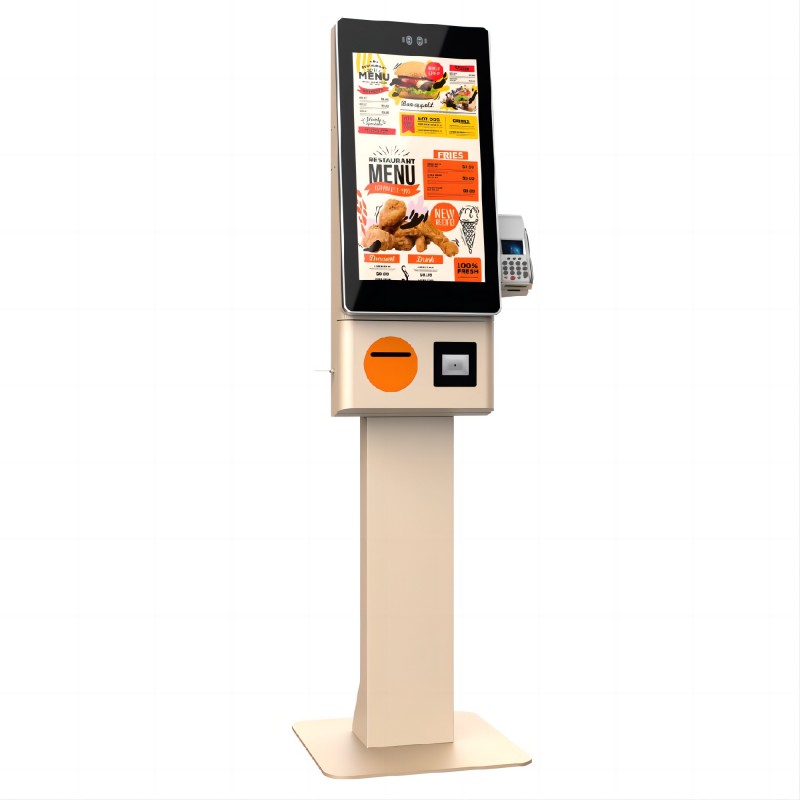
Regular Software Updates: Schedule and implement software updates to ensure the kiosk operates with the latest features and security measures.
Hardware Checks: Periodically inspect hardware components, such as the touchscreen, printer, and payment terminal, for wear and tear.
Cleaning: Establish a routine cleaning schedule for the kiosk, including the touchscreen and surrounding area, to maintain hygiene and usability.
Technical Support: Ensure access to technical support for troubleshooting any operational issues or malfunctions.
Performance Monitoring: Monitor kiosk performance and customer usage data to identify areas for improvement and optimize the user experience.
Feedback Collection: Gather feedback from customers and staff to assess the kiosk's effectiveness and make necessary adjustments.
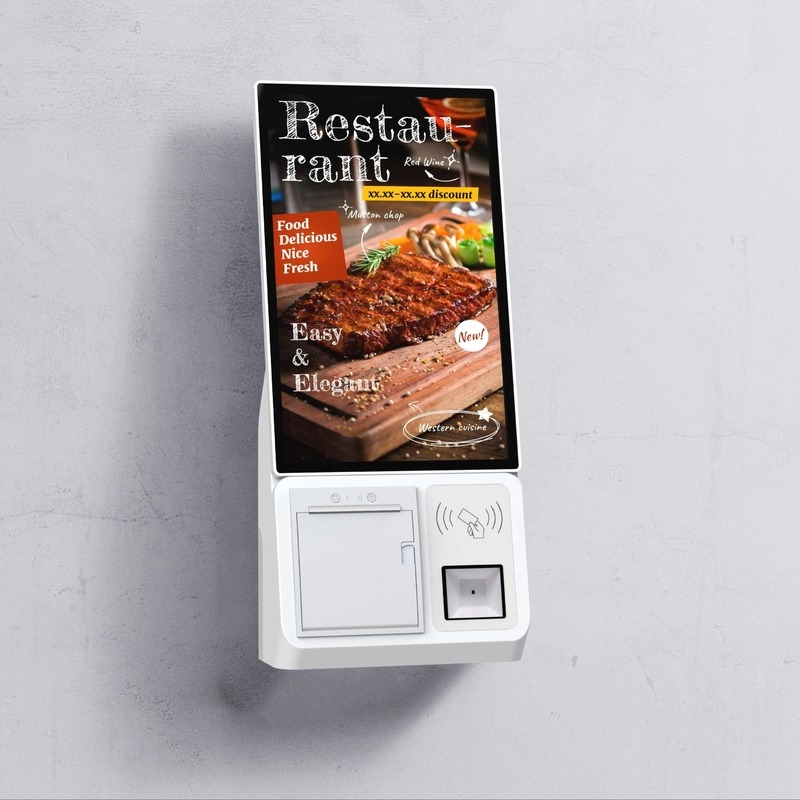
Compatibility Assessment: Ensure the self ordering kiosk is compatible with the current POS system for effective communication.
API Integration: Use the POS system's API to connect the kiosk for real-time order and payment data exchange.
Network Configuration: Connect both the kiosk and POS system to the same network, ensuring reliable data communication.
Software Configuration: Set up the kiosk software with necessary API keys and parameters for seamless integration with the POS.
Menu Synchronization: Keep menu items consistent by syncing updates from the POS system to the kiosk automatically.
Payment Processing: Integrate secure payment processing capabilities at the kiosk, linking it to the POS’s payment gateway.
Testing: Conduct thorough tests to ensure accurate order transmission and proper payment processing from the kiosk.
Staff Training: Train staff on managing the integrated system and addressing any issues that may arise during operation.
Ongoing Maintenance: Regularly update both systems to maintain compatibility and resolve any integration issues promptly.
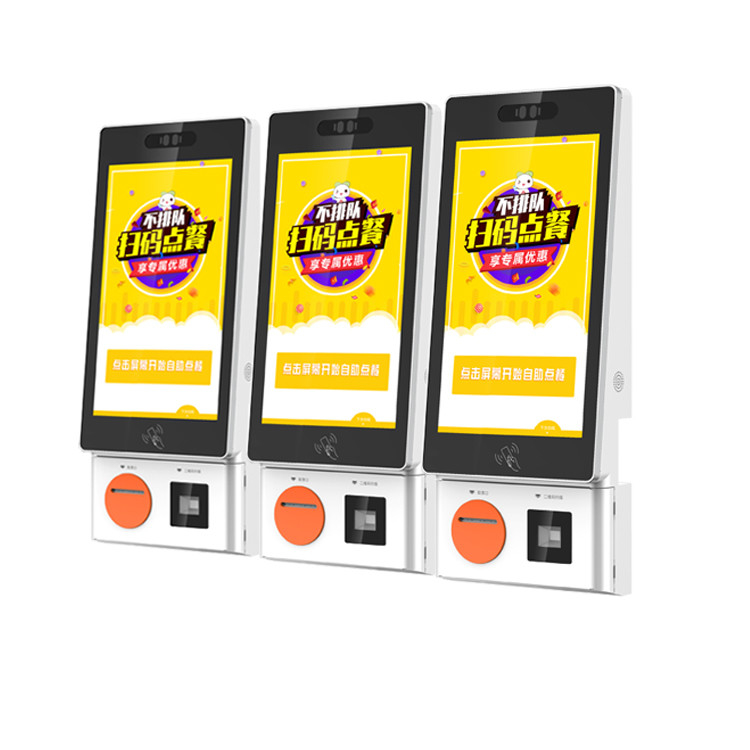
Restaurant self ordering kiosks are designed to provide a seamless payment experience for customers. They typically support a variety of payment methods, including:
Credit and Debit Cards: Kiosks commonly accept major credit and debit cards through secure card readers, allowing for quick transactions.
Mobile Payments: Integration with mobile payment platforms such as Apple Pay, Google Pay, and Samsung Pay enables customers to pay using their smartphones.
Contactless Payments: Many kiosks are equipped with NFC (Near Field Communication) technology, allowing customers to make contactless payments with compatible cards or devices.
Cash Payments: Some kiosks feature cash acceptors, enabling customers to pay with cash, providing flexibility for those who prefer not to use cards.
Loyalty Cards: Kiosks can integrate with loyalty programs, allowing customers to use their loyalty cards or apps to earn points and redeem rewards.
Gift Cards: Acceptance of restaurant-specific gift cards allows customers to use preloaded funds for their orders.
Prepaid Cards: Kiosks may also accept prepaid cards, offering customers another option for payment.
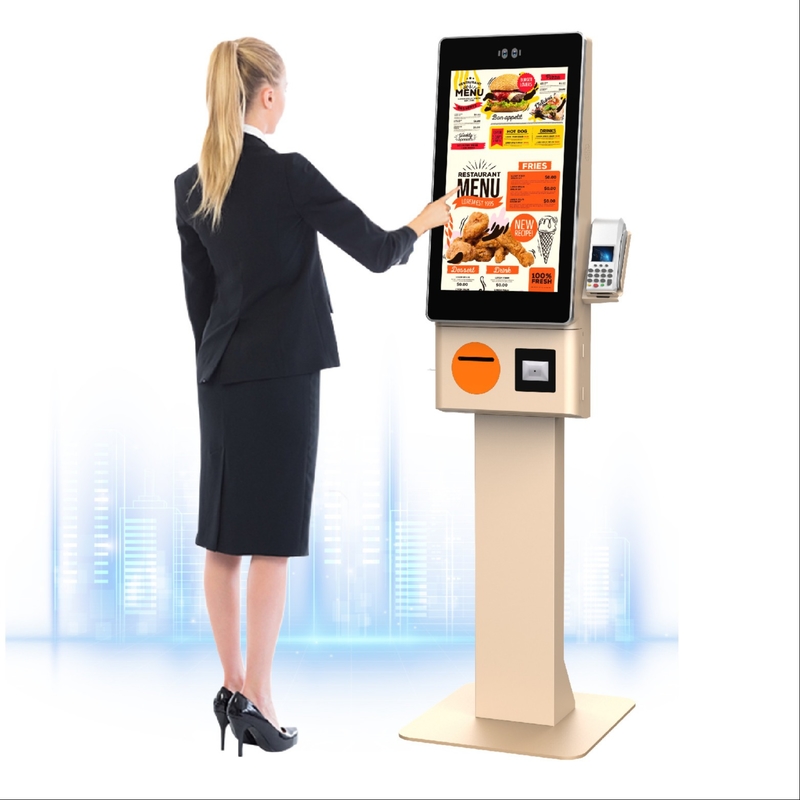
Speed and Efficiency: Self ordering kiosks reduce wait times by allowing customers to place their orders quickly without waiting for a server. This leads to faster service and higher table turnover.
Customization: Customers can easily customize their orders directly on the kiosk, ensuring they receive exactly what they want without miscommunication.
User-Friendly Interface: Most kiosks feature intuitive touchscreen interfaces that guide users through the ordering process, making it easy for customers of all ages.
Visual Menu Display: Kiosks often display vibrant images and descriptions of menu items, helping customers make informed decisions and enhancing their overall dining experience.
Payment Convenience: Customers can pay securely at the kiosk using various payment methods, including credit/debit cards, mobile payments, and cash, providing flexibility and convenience.
Reduced Errors: By allowing customers to enter their own orders, kiosks minimize human errors associated with verbal orders, leading to greater satisfaction.
Data Collection: Kiosks gather valuable data on customer preferences and ordering patterns, which can help restaurants improve their menu offerings and marketing strategies.
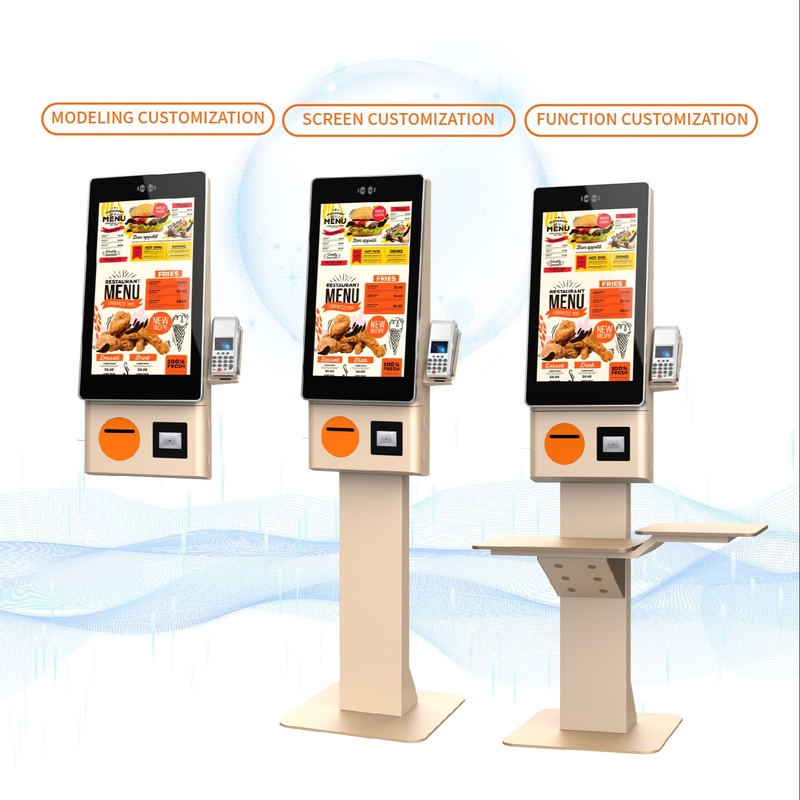
NCR Corporation: A leader in providing self-service kiosks and POS solutions for the restaurant industry, known for its innovative technology and reliability.
Diebold Nixdorf: Offers self ordering kiosks with advanced features, focusing on enhancing customer experience and operational efficiency.
Zivelo: Specializes in custom kiosk solutions, including self ordering kiosks, known for their modern designs and user-friendly interfaces.
Kiosk Information Systems: A prominent manufacturer of self-service kiosks, providing versatile solutions for various industries, including restaurants.
Maya Kiosks: Offers a range of self ordering kiosks with customizable options, designed to improve customer interaction and streamline the ordering process.
ParTech: Known for its comprehensive restaurant technology solutions, including self ordering kiosks that integrate seamlessly with existing POS systems.
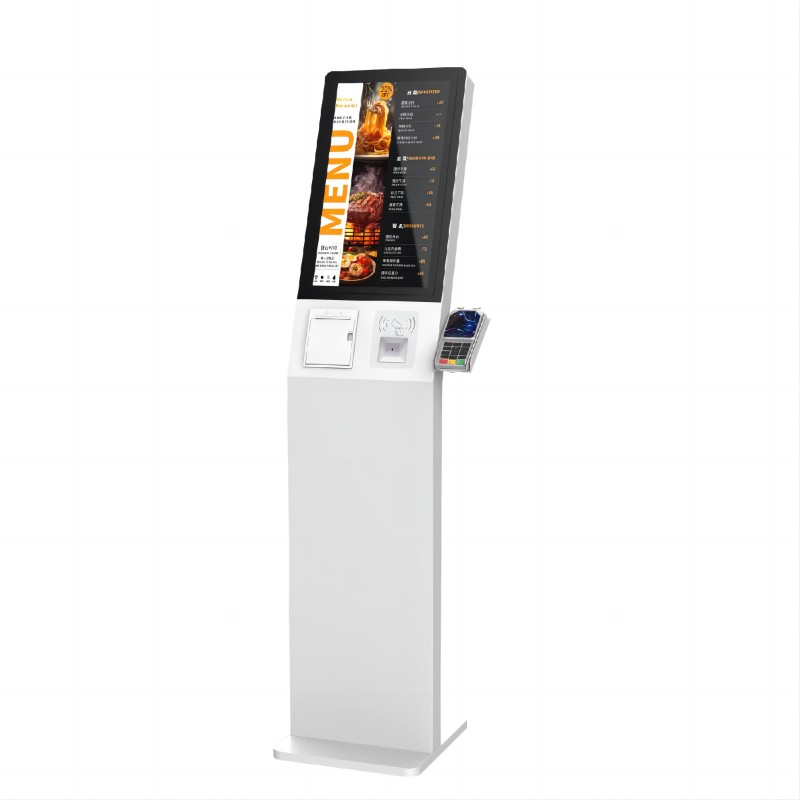
| Kiosk Type | Size | Style | Design Features | Price Range |
|---|---|---|---|---|
| Basic Self Ordering Kiosk | 15-22 inches | Compact and Functional | Simple touchscreen, minimal branding | $3,000 - $7,000 |
| Mid-Range Self Ordering Kiosk | 22-27 inches | Modern and Sleek | Enhanced UI, customizable branding, dual screens | $7,000 - $10,000 |
| Advanced Self Ordering Kiosk | 27-32 inches | Stylish and Interactive | Touchscreen with vibrant graphics, advanced analytics | $10,000 - $15,000+ |
| Outdoor Self Ordering Kiosk | 27-40 inches | Weather-Resistant | Durable materials, anti-glare screens, secure housing | $12,000 - $20,000+ |
| Countertop Self Ordering Kiosk | 15-22 inches | Space-Saving | Compact design, ideal for limited counter space | $3,500 - $8,000 |
| Floor Standing Self Ordering Kiosk | 27-42 inches | Free-Standing | Tall design for easy accessibility, multiple screens | $10,000 - $18,000 |
Define Your Needs: Identify your restaurant's requirements, including order volume and essential kiosk features.
Research Available Options: Compare manufacturers and models, reviewing their features, styles, and prices.
Evaluate Compatibility: Ensure the kiosk integrates with your existing POS system and supports real-time menu updates.
Request Quotes and Proposals: Contact manufacturers for detailed quotes and inquire about customization options.
Assess Support and Maintenance: Investigate after-sales support, warranty, and training resources for staff.
Visit Showrooms or Trade Shows: Test kiosks in person to assess user interface and functionality.
Make Your Decision: Compare final quotes and choose the kiosk that best meets your needs and budget.
Place Your Order: Confirm order details with the manufacturer, including delivery timelines and payment terms.
Installation and Setup: Coordinate installation and prepare the kiosk location, testing functionality after setup.
Monitor Performance: Collect feedback from customers and staff to optimize kiosk usability and effectiveness.
Understand Your Budget: Determine your budget upfront, including initial costs and long-term expenses like maintenance and software updates.
Prioritize Key Features: Focus on essential features such as screen size, payment options, and customization capabilities that align with your restaurant’s needs.
Research User Experience: Look for kiosks with user-friendly interfaces. Read customer reviews to gauge satisfaction and ease of use.
Check Integration Capabilities: Ensure the kiosk can seamlessly integrate with your existing POS system and any other operational software.
Consider Future Scalability: Choose a kiosk that can grow with your business, allowing for upgrades and additional features as needed.
Evaluate Support Services: Investigate the manufacturer's customer support, warranty, and training resources to ensure reliable assistance post-purchase.
Test Before You Buy: Whenever possible, test the kiosk in a live environment or demo unit to evaluate its functionality and user interface.
Ask About Customization: Inquire about branding and design options that can help the kiosk align with your restaurant’s theme.
Review Contract Details: Carefully read the terms and conditions, focusing on return policies, warranties, and service agreements.
Plan for Installation and Training: Coordinate with the manufacturer for installation support and ensure staff training is included to maximize efficiency.
What did our happy clients say?
We recently purchased a restaurant self ordering kiosk and we couldn't be happier! The quality is outstanding, with a sleek design that fits perfectly into our decor. The touchscreen is responsive and user-friendly. The manufacturer's support was exceptional, guiding us through the installation process and providing thorough training. Highly recommended!
Our experience with the restaurant self ordering kiosk has been fantastic! The build quality is top-notch, and it's made a significant difference in our service speed. The manufacturer was incredibly supportive, helping us with customization options that truly reflected our brand. Their team was always available for questions. A wonderful investment!
We're extremely satisfied with our restaurant self ordering kiosk! The quality exceeded our expectations, and customers love the ease of use. The manufacturer provided excellent service from start to finish, assisting us in every step of the purchase and installation. Their attention to detail and customer care is commendable. Definitely worth the investment!
Buying a restaurant self ordering kiosk from this manufacturer was one of the best decisions for our restaurant! The quality is remarkable, with a durable design that stands up to high traffic. The customer service team was incredibly helpful, offering prompt support and valuable insights during setup. We’ve seen a boost in efficiency thanks to their outstanding product!